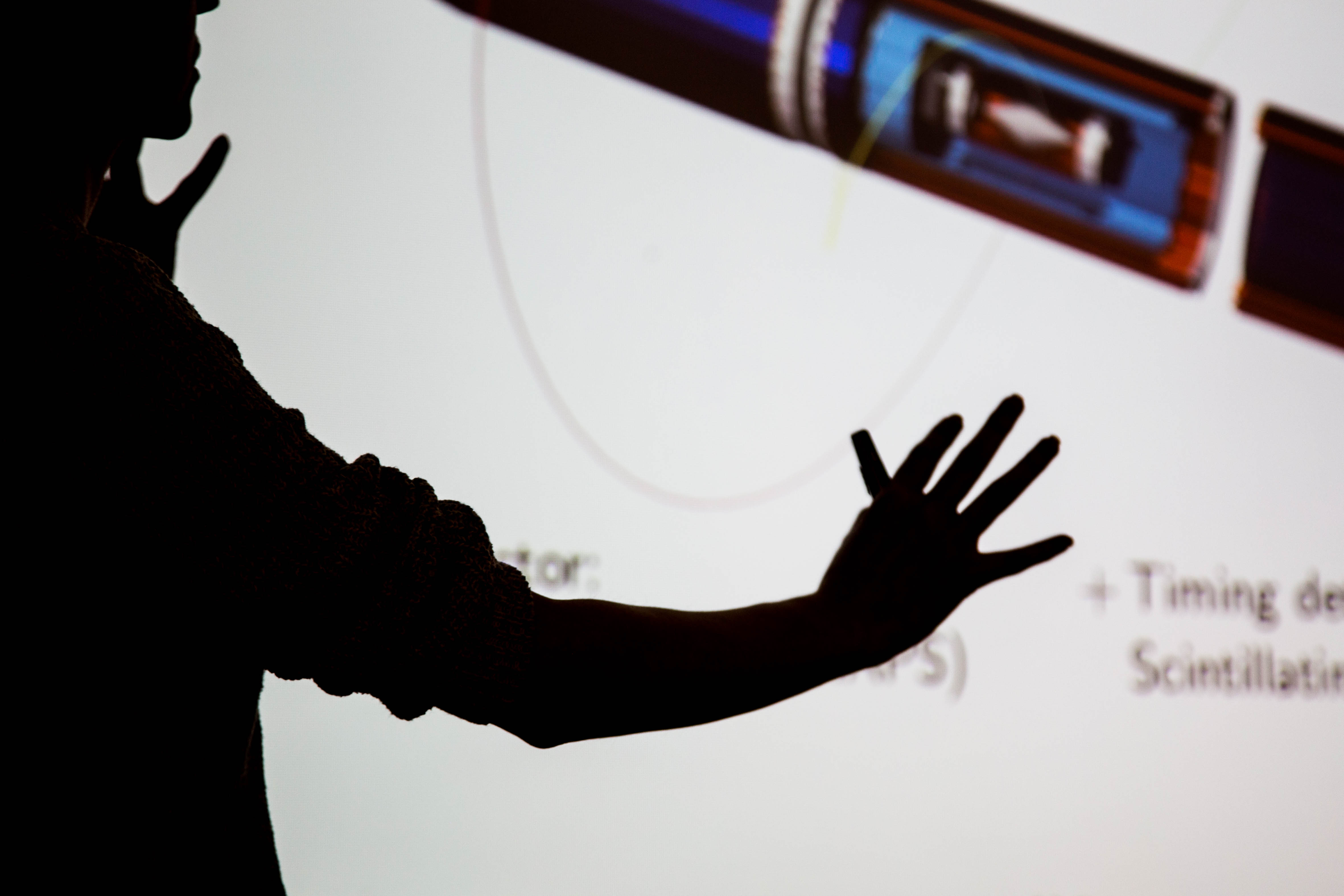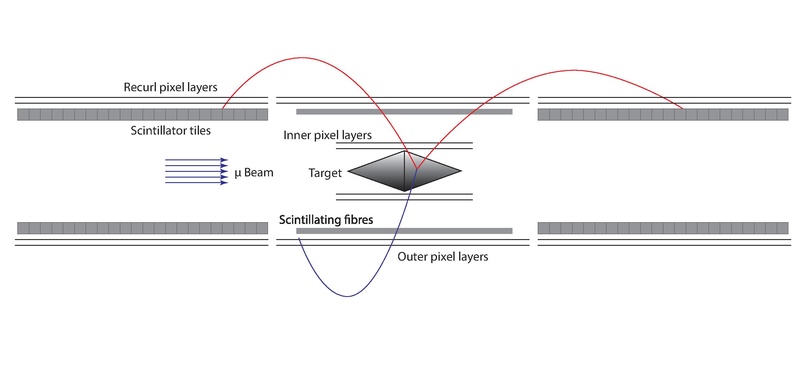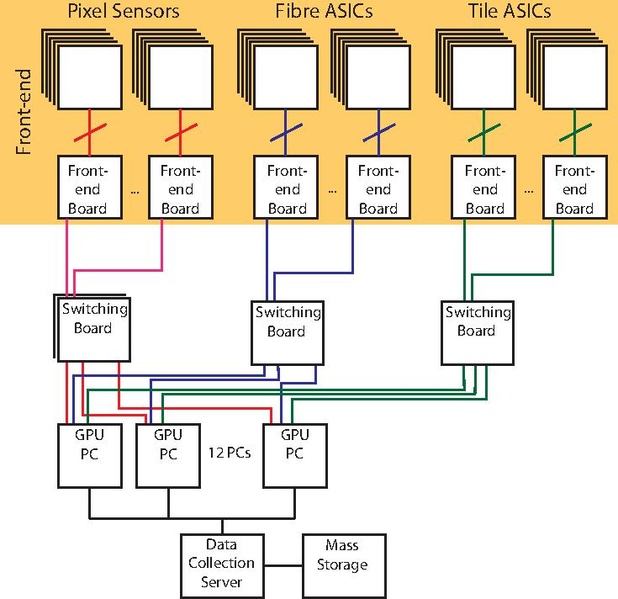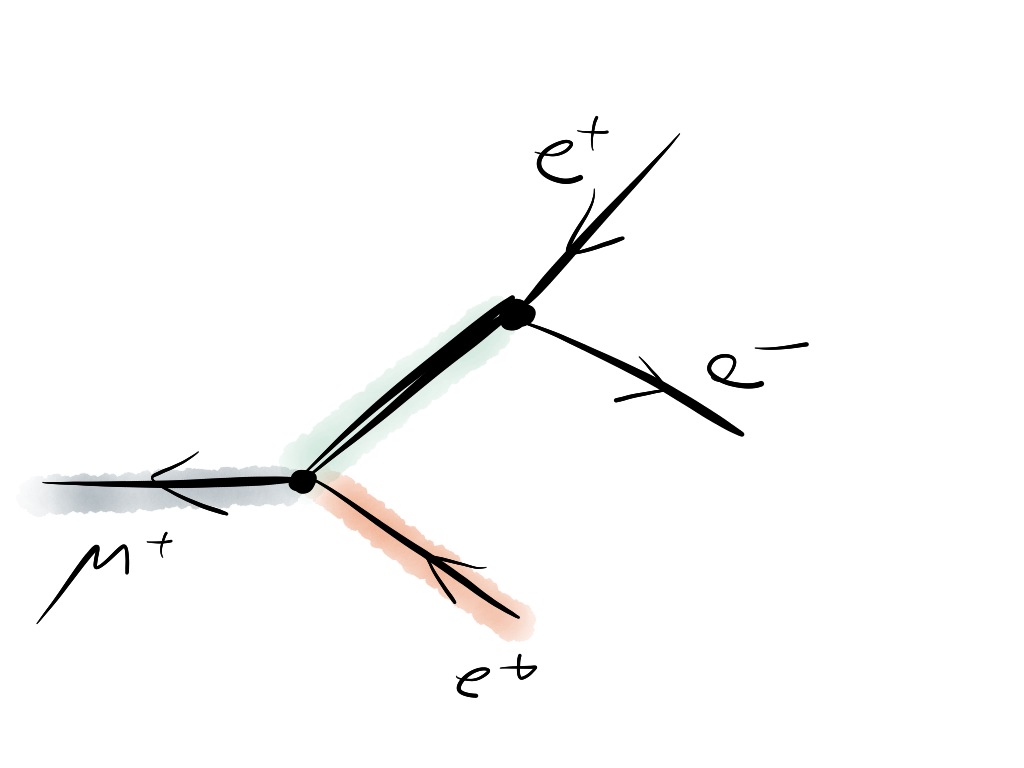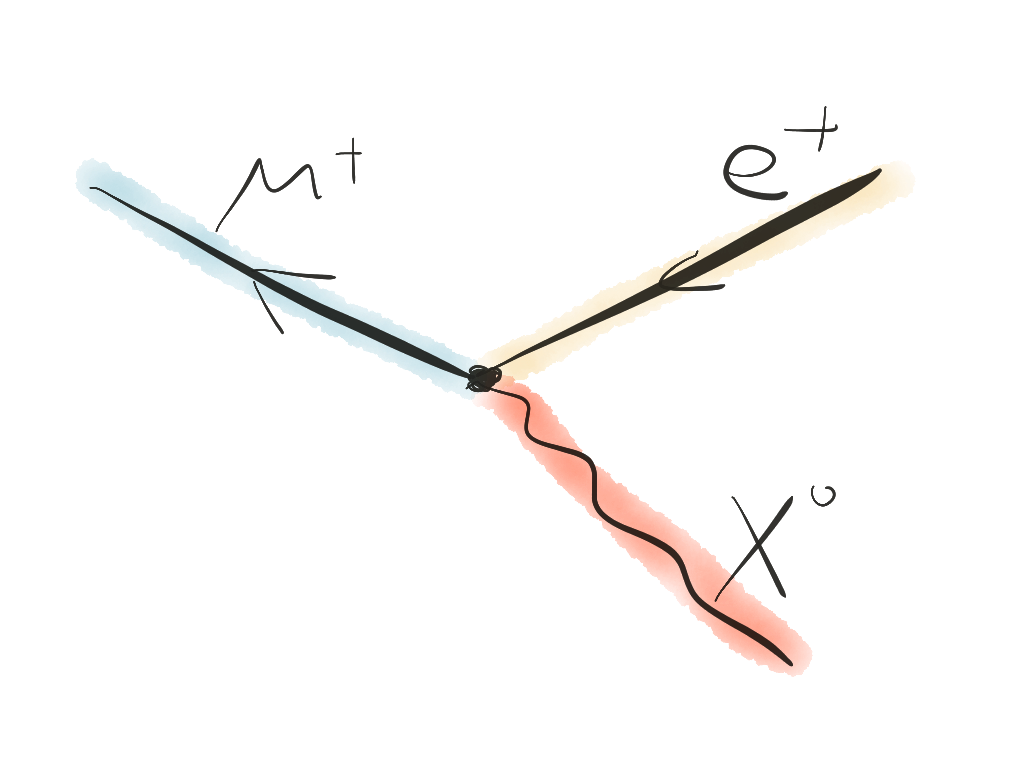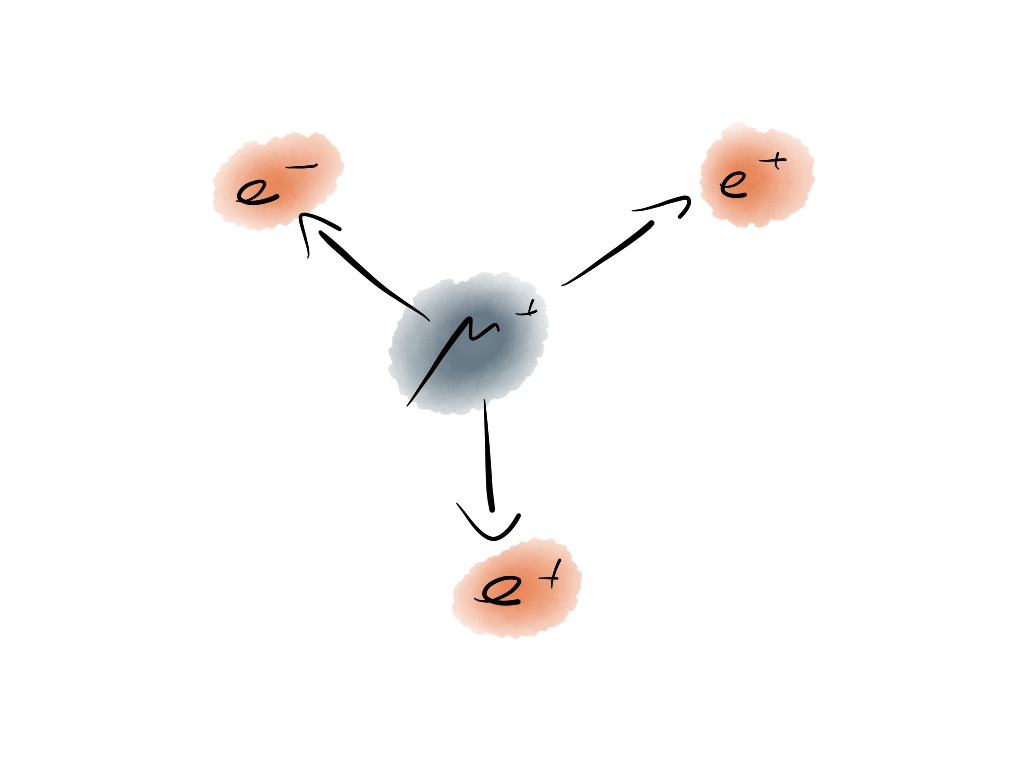
Signal and Background
The invariant mass of \(\mu\rightarrow eee\) signal decays equals the muon rest mass invariant mass \(m_{\mu}\). In background from rare SM muon decay \(\mu^+\rightarrow e^+e^-e^+\nu\nu\), part of the energy is carried by the undetected neutrinos. Additional backgrounds stem from accidental combinations of three tracks.

